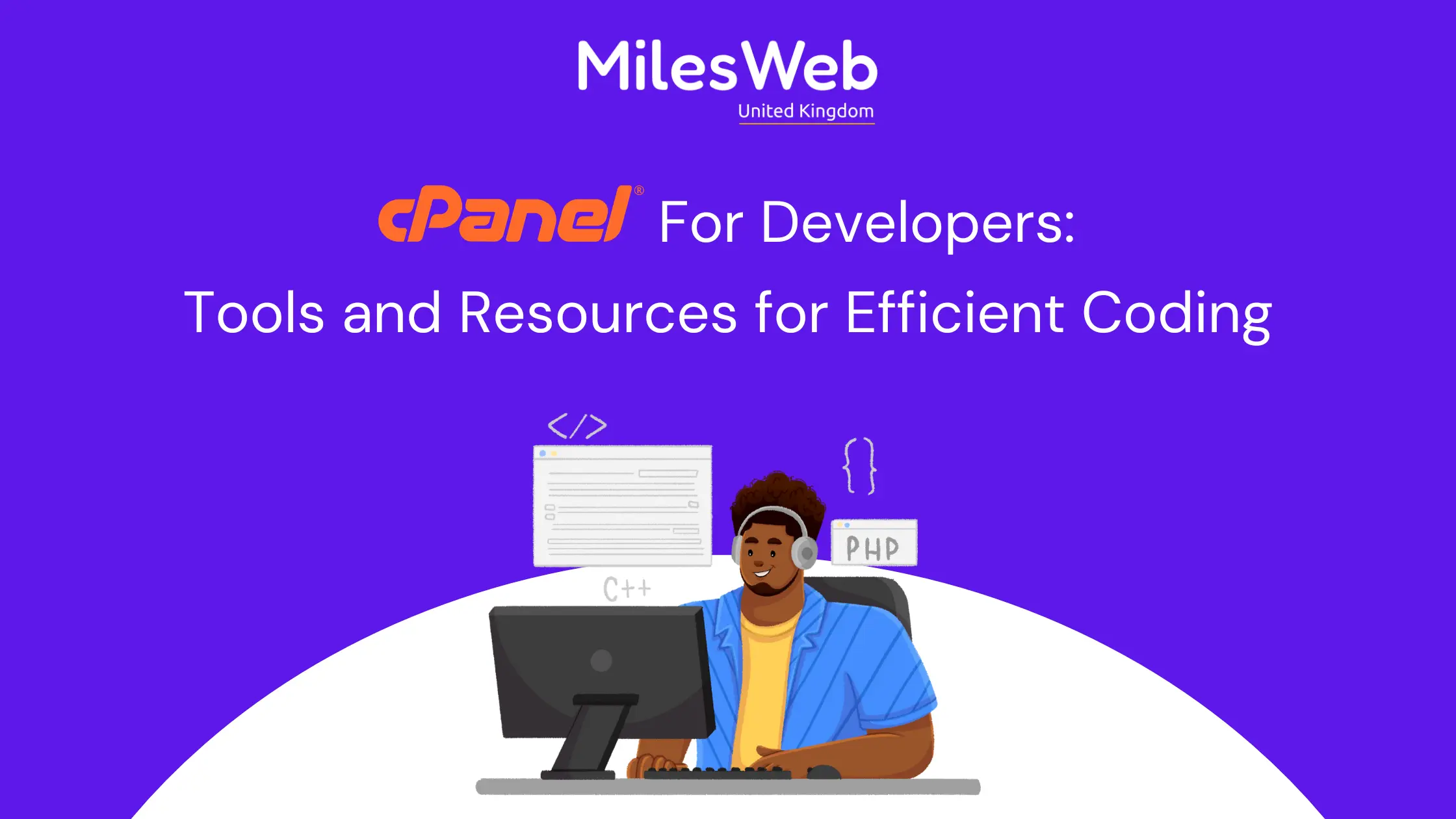The cPanel is a popular control panel that helps in domain management without coding expertise. The control panel has a user-friendly interface that allows non-technical users to manage their website’s backend operations like email accounts, databases, and much more. cPanel hosting services are built for the developer’s community. Different frameworks help in website building for them.

cPanel itself doesn’t set the price for web hosting, but rather it’s a feature offered by many web hosting providers. The web hosting price UK with cPanel can vary greatly depending on the provider, the resources allocated (storage, bandwidth), and the number of websites you need to manage. Prices can start as low as a few dollars a month for basic plans and can go up to hundreds for feature-rich options. It’s important to compare plans and features to find a cheap cPanel hosting solution that meets your website’s needs and budget.
In this blog, we will discuss different sets of resources and features of the control panel that are useful for.
What is cPanel?
In the web hosting industry, the cPanel is a control panel that manages software/applications with a GUI and automation tools. This control panel is accessible only to Linux operating system distros. It is an affordable option to manage the technicalities of the website operations. Most of the managed web hosting service providers offer this control panel at no cost included in their plans. But remember it is not free and there is a nominal charge included in the web hosting package itself.
With this control panel, account management is easier as you are working through a command-line interface. Moreover, manages all the websites and domains on a specific account from its cPanel interface.
What Operations Can Be Conducted on the cPanel?
WordPress Installation
In every cPanel, there is a software installer tool that makes it easier for a WordPress installation. You must know that open-source content management systems like Drupal and Joomla are available in it.
In the cPanel, there is an option for Scripts or App Installers. With this, WordPress installation is easier. After choosing the option, there is an Installation option given which allows users to install WordPress in less time.
By following this measure, users do not have to visit the official website of WordPress and install the application.
Domain management on cPanel
With cPanel, domain and subdomain management is easier because both of them are associated with the hosting account. You will get a Domains section which manages everything from addon domains to redirects. Here are some key features about it.
- Subdomains – Make subsections of your site instead of buying and managing an entirely new domain. An example of this would be store.example.com.
- For a newly installed WordPress site, you can add a new domain.
- Domain Add-Ons – Add domains to other sites or park them.
- Your primary domain name can be linked to other domain names through aliases. In this case, the extras are used as “aliases,” making the site available on all of the domains you specify.
- URL redirects – Send certain URLs to another URL.
Email management on cPanel
Business emails offer a professional appearance where the domain name is added to the email addresses. For ex:mark@exampledomain.org. In cPanel, there is a dashboard that includes an email section for managing these email addresses.
An important area is the Email account link. This is where you add and manage your business email ID. You already own the domain that’s connected to this cPanel, so click on the Email Accounts button to create emails for your business.
File management on cPanel
Your website files are located in the Files section of cPanel. There are many types of WordPress files, including themes, plugins, media, and so on. You need hosting because WordPress files are stored on the host’s servers.
The cPanel dashboard has features for viewing these files, backing them up, and changing them altogether. To access your site files, go to the Files section, then click on the File Manager.
Here, cPanel lets you add files and folders, and upload files that may be missing. For instance, you could upload a theme file here instead of through the WordPress dashboard.
Database management on cPanel
Although most hosting users don’t touch their databases, it’s worth knowing where they are in case you need to modify something or move them.
At its most basic, a website database stores data.
It could be anything from user information to eCommerce product information. Data is organized in a large list so that your website can reference it at any time.
Summing Up
We would like to conclude this article on a positive note. cPanel is the industry-leading control panel that comes with a plethora of features. Our guide has summed up all the reliable features that are helpful for a website developer.
For more convenience for a web developer, MilesWeb is the industry’s best cPanel web hosting service provider offering reliable services with managed support, a 1-click installer, and enterprise-grade server resources. They have a different range of web hosting services having cPanel in it. So, if you have the ambition to build an online presence and get this control panel also, sign up to their plans today!
